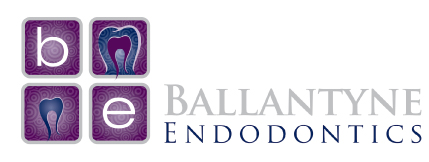What is a Gentlewave Root Canal procedure?
We are proud to offer state-of-the-art treatments such as GentleWave to our patients. Sometimes patients ask us what is the GentleWave root canal procedure and why we recommend it?
GentleWave is a minimally invasive option to standard root canal treatment. This patented technology uses acoustic energy to thoroughly cleanse and disinfect the root canal system. According to GentleWave, the process is “designed to prepare, clean and preserve the structure of teeth.”
Read more : Gentlewave Root Canal Treatment Process
From a patient’s point of view, GentleWave is quick and often pain-free. From our point of view, it reaches spaces that traditional methods cannot always easily reach.
Keep in mind; this article is for general education. Patient experience varies, so what is true for someone else may not be true for you. Please remember, this article is not a replacement for custom-tailored dental care from a qualified dentist or endodontist.
How Does the GentleWave Root Canal Procedure Compare to a Standard Root Canal?
In both the standard and GenteWave root canal, the goal is to preserve the original tooth and restore health. Both treatment options have provided relief for many patients. We offer GentleWave because we find treatment plans vary by patient. What may work for one tooth may not for another. This is why offering various types of treatment options is essential.
Standard Root Canal
The word “root canal” is unfairly associated with pain. Some of this is an outdated notion based on the root canals of the past. However, even a standard root canal relieves patients of chronic and often unbearable pain when successful.
The traditional root canal is a complex procedure. An endodontist creates an opening in the tooth’s crown and then uses files to reach deeply into the root canal system. They manually clean out the infected pulp, debris, and bacteria. They use irrigants to disinfect the area. Next, the endodontist refills the tooth and seals it. The patient then needs a permanent filling or crown to protect the tooth after the procedure.
The GentleWave Procedure
The difference is how your endodontist cleans the tooth. GentleWave is less invasive since it harnesses broad spectrum acoustic energy instead of files and instruments to clean the tooth. This leaves more of the tooth’s natural structure in place while deeply cleaning and disinfecting the inner tooth.
After cleaning, the tooth is still filled with biocompatible material like gutta-percha. Your dental professional still seals the tooth to lock out new bacteria.
The standard root canal may require an hour and 45-minute appointment to complete the process. The GentleWave procedure is considerably quicker, with the cleaning process taking as little as ten minutes.
Benefits of GentleWave
We hinted at a few benefits of the GentleWave procedure, but here is a list:
- Whenever possible, we aim to preserve natural teeth since nothing fits as well as your own bite. Both root canal methods help, but since GentleWave is less invasive, it also is less likely to damage the tooth’s natural strength and structure.
- GentleWave cleaning requires less time commitment from the patient, which means you can return to your regular life quicker following the short recovery period.
- Patients report that GentleWave is less painful than they anticipated and more often than not, pain-free.
- The gentle deep cleaning reaches tiny places that are difficult to reach with dental instruments. It is less likely to leave behind harmful bacteria or infected tissue.
What to Expect After Your Root Canal
Recovery from a GentleWave root canal is fairly uneventful. We would like to offer a few general tips to help:
- If you smoke or drink alcohol, please avoid it while recovering.
- Drink plenty of fluids such as water, but please avoid using a straw or drinking from a bottle to reduce the risk of damaging your new root canal.
- Apply ice packs in 15-minute increments to the affected area to help reduce swelling and inflammation.
- Rest with your head elevated with pillows.
- After 24-hours, rinse your mouth with warm salt water after each meal or snack. Be gentle.
- This may seem obvious, but please don’t chew gum or eat chewy foods while recovering.
- Avoid biting down with the treated tooth.
- Follow any other advice your dentist or endodontist provides that may be unique to your situation, health, or lifestyle.
Raed More: Root Canal Recovery Tips
Pay special attention to what you eat since you want to give the affected tooth time to heal. Avoid hard, crunchy, or chewy foods. Instead, opt for soft foods or liquids that don’t require a straw. Also, avoid spicy or hot foods during recovery. Some examples of foods to eat after a root canal include:
- Yogurt
- Mashed potatoes
- Small, thin, soft pasta
- Banana or avocado
- Fruit smoothies (just sip them)
- Oatmeal or cooked soft cereal
- Soup
Any medical procedure has a small risk of complications. If you notice unusual pain, fever, or chills, please contact your physician, dentist, or visit urgent care if it is after-hours. Adverse reactions are rare with root canals, but please seek immediate care in the unlikely event of infection or complication.
Most patients experience a little tenderness in and surrounding the tooth for about four days. Often this temporary sensitivity pales in comparison to the pain that led to the root canal.
Please keep any recommended follow-up appointments since we schedule those to monitor recovery and ensure a successful treatment experience.
If You Are a Charlotte-Area Patient
We have had the privilege of treating Charlotte, North Carolina patients who need a root canal. We are passionate about helping people maintain their natural teeth for a lifetime whenever possible. Through our experience, we have had the pleasure of seeing patients experience relief from pain and a restored sense of health and well-being.
If you need a root canal, ask your dentist for a referral to Ballantyne Endodontics or call us for more information.

